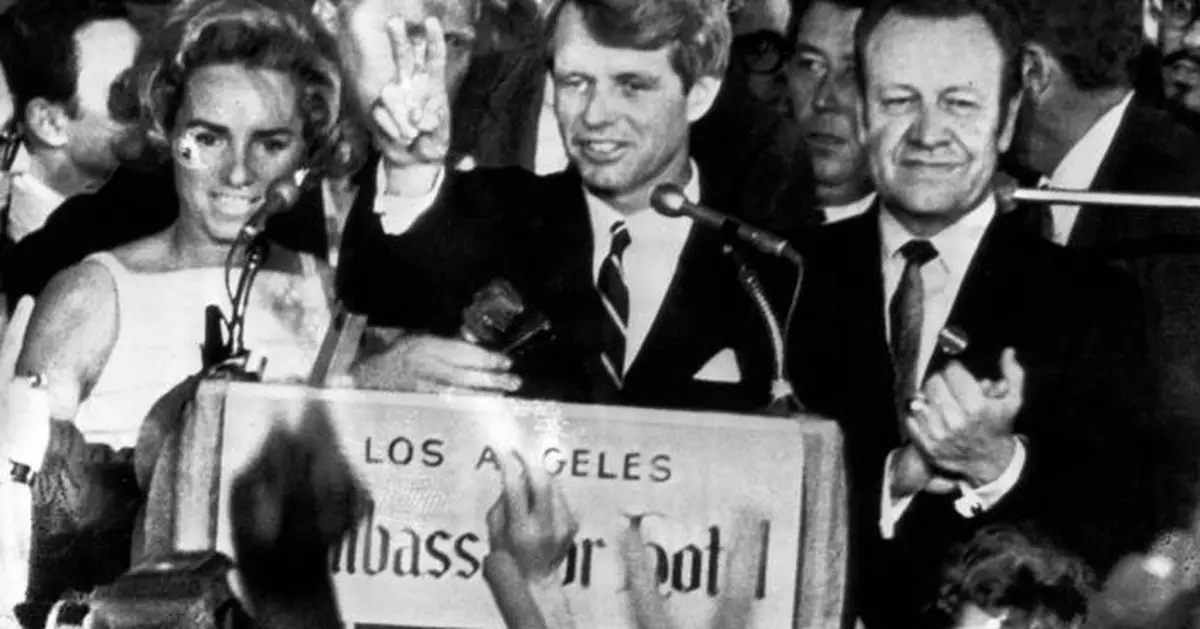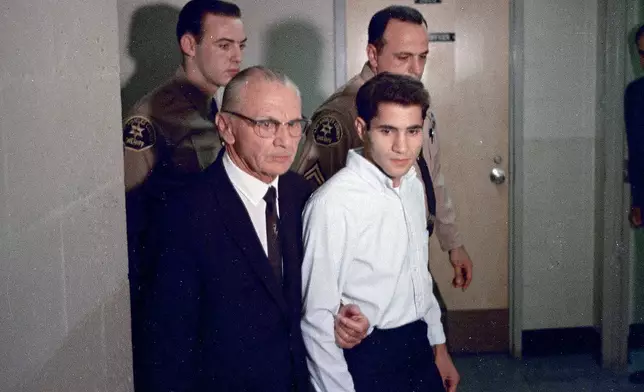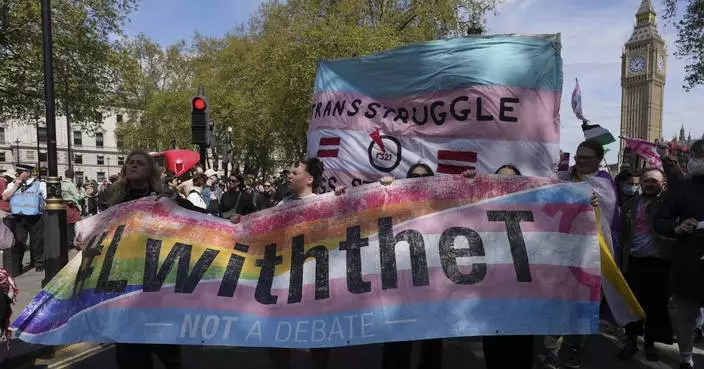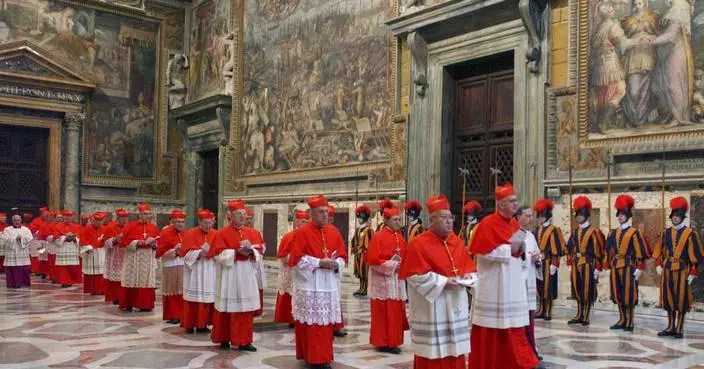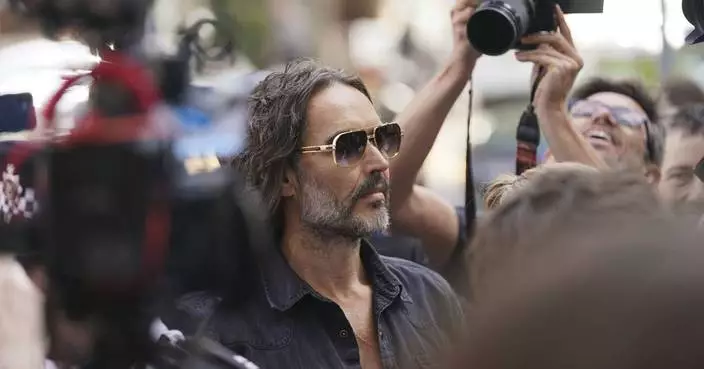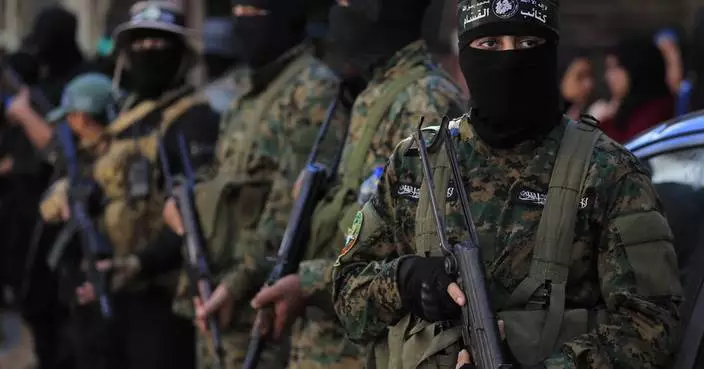WASHINGTON (AP) — About 10,000 pages of records related to the 1968 assassination of Sen. Robert F. Kennedy were released Friday, including handwritten notes by the gunman, who said the Democratic presidential candidate “must be disposed of” and acknowledged an obsession with killing him.
Many of the files had been made public previously, while others had not been digitized and sat for decades in federal government storage facilities. Their release continued the disclosure of historical investigation documents ordered by President Donald Trump.
Click to Gallery
FILE - Sen. Robert F. Kennedy, D-N.Y., speaks to campaign workers, June 5, 1968, as his wife Ethel, left, and California campaign manager and speaker of the California Assembly, Jesse Unruh, look on, at the Ambassador Hotel in Los Angeles. (AP Photo)
+1
FILE - Sirhan Sirhan reacts during a parole hearing on Feb. 10, 2016, at the Richard J. Donovan Correctional Facility in San Diego. (AP Photo/Gregory Bull, Pool, File)
FILE - Sirhan Sirhan, right, accused of assassinating Sen. Robert F. Kennedy, is seen with his attorney Russell E. Parsons in Los Angeles in June 1968. (AP Photo, File)
FILE - Senator Robert F. Kennedy, D-NY, tells reporters, and the nation, that he is a candidate for his party's presidential nomination on March 16, 1968, in Washington. (AP Photo, File)
FILE - President Donald Trump holds up a signed executive order aiming to declassify remaining federal records relating to the assassinations of President John F. Kennedy, Sen. Robert F. Kennedy, and Martin Luther King Jr., in the Oval Office of the White House, Jan. 23, 2025, in Washington. (AP Photo/Ben Curtis, File)
FILE - Sen. Robert F. Kennedy, D-N.Y., speaks to campaign workers, June 5, 1968, as his wife Ethel, left, and California campaign manager and speaker of the California Assembly, Jesse Unruh, look on, at the Ambassador Hotel in Los Angeles. (AP Photo)
Kennedy was fatally shot on June 5, 1968, at the Ambassador Hotel in Los Angeles moments after giving a speech celebrating his victory in California’s presidential primary. His assassin, Sirhan Sirhan, was convicted of first-degree murder and is serving life in prison.
The files included pictures of handwritten notes by Sirhan.
“RFK must be disposed of like his brother was,” read the writing on the outside of an empty envelope, referring to Kennedy's older brother, President John F. Kennedy, who was assassinated in 1963. The return address was from the district director of the Internal Revenue Service in Los Angeles.
The National Archives and Records Administration posted 229 files containing the pages to its public website.
The release comes a month after unredacted files related to the assassination of President Kennedy were disclosed. Those documents gave curious readers more details about Cold War-era covert U.S. operations in other nations but did not initially lend credence to long-circulating conspiracy theories about who killed JFK.
Health and Human Services Secretary Robert F. Kennedy Jr., the son of Robert Kennedy, commended the release.
“Lifting the veil on the RFK papers is a necessary step toward restoring trust in American government,” the health secretary said in a statement.
The files surrounding Robert Kennedy's assassination also included notes from interviews with people who knew Sirhan from a wide variety of contexts, such as classmates, neighbors and coworkers. While some described him as “a friendly, kind and generous person” others depicted a brooding and “impressionable” young man who felt strongly about his political convictions and briefly believed in mysticism.
According to the files, Sirhan told his garbage collector that he planned to kill Kennedy shortly after the Rev. Martin Luther King Jr. was assassinated on April 4, 1968. The sanitation worker, a Black man, said he planned to vote for Kennedy because he would help Black people.
“Well, I don’t agree. I am planning on shooting the son of a bitch,” Sirhan replied, the man told investigators.
Larry Sabato, director of the University of Virginia Center for Politics and author of “The Kennedy Half-Century," said there have always been conspiracies surrounding Robert Kennedy's assassination. He believes the rollout of documents Friday would be similar to the JFK documents released earlier this year.
He cautioned that a review needs to be done carefully and slowly, “just in case there is a hint in there or there is an anecdote" that could shed more light on the assassination.
“I hope there’s more information,” Sabato said. “I’m doubtful that there is, just as I said when the JFK documents were released.”
Some redactions remained in the documents posted online Friday, including names and dates of birth. Last month, the Trump administration came under criticism over unredacted personal information, including Social Security numbers, during the release of records surrounding President John F. Kennedy’s assassination.
Trump, a Republican, has championed in the name of transparency the release of documents related to high-profile assassinations and investigations. But he has also been deeply suspicious for years of the government’s intelligence agencies. His administration’s release of once-hidden files opens the door for more public scrutiny of the operations and conclusions of institutions such as the CIA and the FBI.
Trump signed an executive order in January calling for the release of government documents related to the assassinations of Robert F. Kennedy and King, who were killed within two months of each other.
Lawyers for Kennedy's killer have said for decades that he is unlikely to reoffend or pose a danger to society, and in 2021, a parole board deemed Sirhan suitable for release. But Gov. Gavin Newsom rejected the decision in 2022, keeping him in state prison. In 2023 , a different panel denied him release, saying he still lacks insight into what caused him to shoot Kennedy.
Kennedy remains an icon for liberals, who see him as a champion for human rights who also was committed to fighting poverty and racial and economic injustice. They often regard his assassination as the last in a series of major tragedies that put the U.S. and its politics on a darker, more conservative path.
He was a sometimes divisive figure during his lifetime. Some critics thought he came late to opposing the Vietnam War, and he launched his campaign for president in 1968 only after the Democratic primary in New Hampshire exposed President Johnson’s political weakness.
Kennedy's older brother appointed him U.S. attorney general, and he remained a close aide to him until JFK's assassination in Dallas. In 1964, he won a U.S. Senate seat from New York and was seen as the heir to the family’s political legacy.
Funk reported from Omaha, Nebraska. Associated Press writers Holly Ramer in Concord, New Hampshire, Eric Tucker in Washington, Juan Lozano in Houston, John Hanna in Topeka, Kansas, Safiyah Riddle in Montgomery, Alabama, Corey Williams in Detroit and Haya Panjwani in Washington contributed to this report.
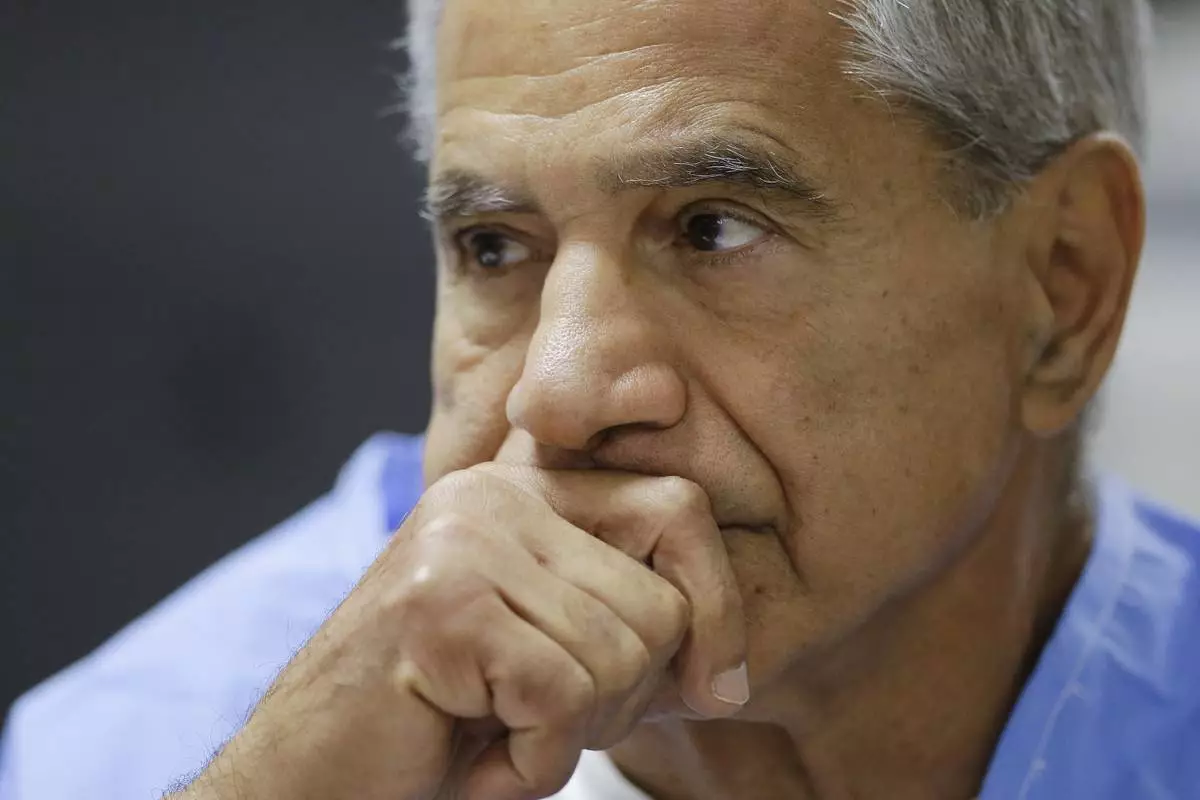
FILE - Sirhan Sirhan reacts during a parole hearing on Feb. 10, 2016, at the Richard J. Donovan Correctional Facility in San Diego. (AP Photo/Gregory Bull, Pool, File)

FILE - Sirhan Sirhan, right, accused of assassinating Sen. Robert F. Kennedy, is seen with his attorney Russell E. Parsons in Los Angeles in June 1968. (AP Photo, File)
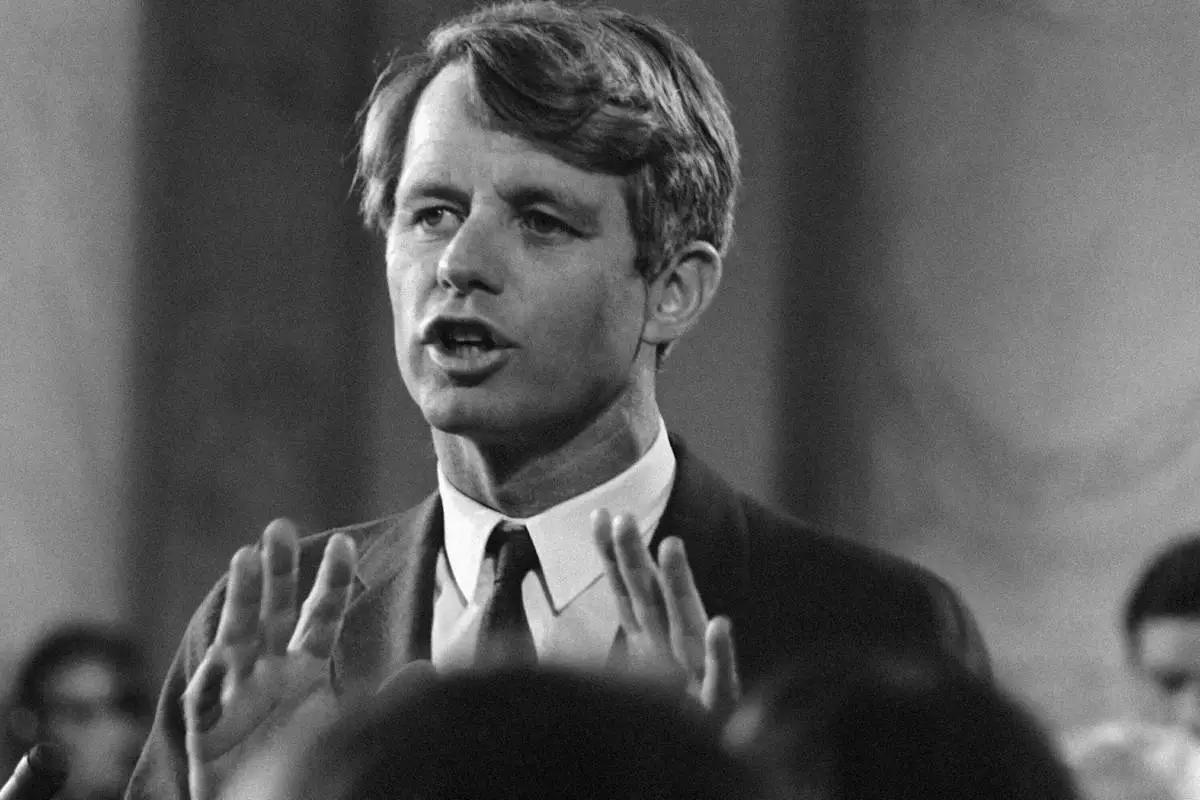
FILE - Senator Robert F. Kennedy, D-NY, tells reporters, and the nation, that he is a candidate for his party's presidential nomination on March 16, 1968, in Washington. (AP Photo, File)
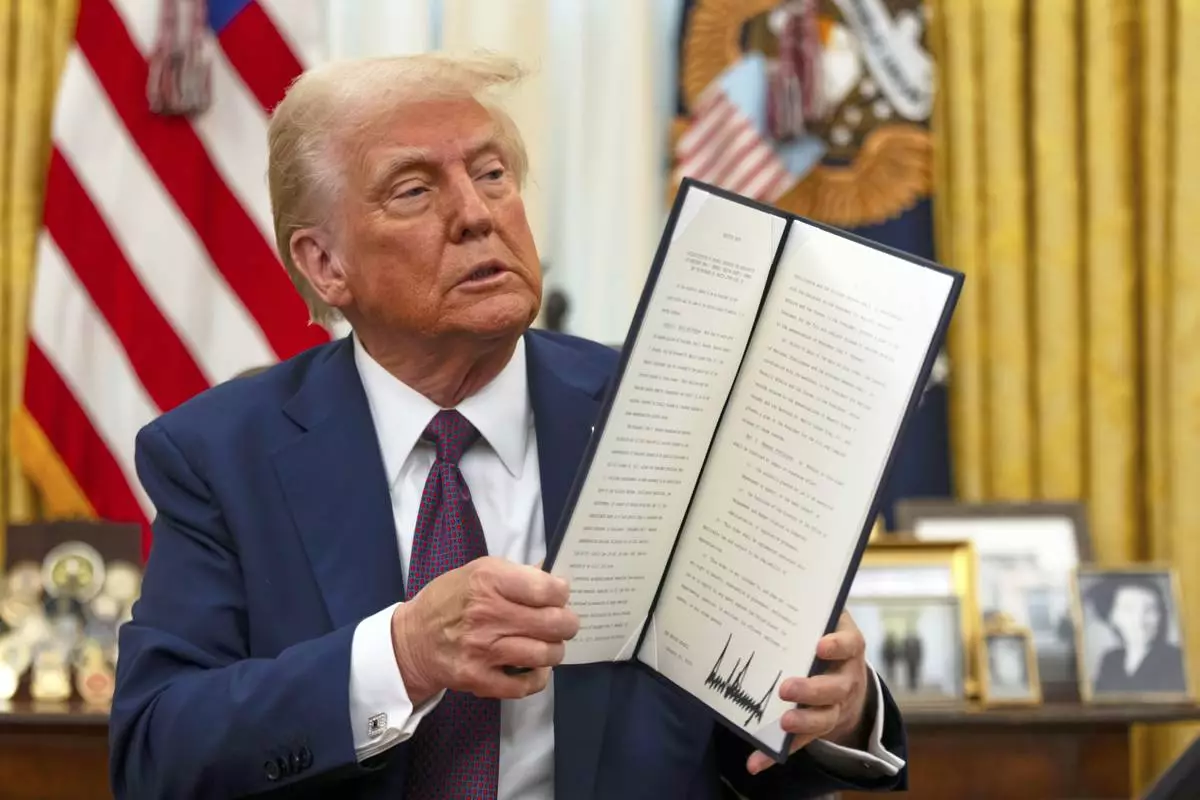
FILE - President Donald Trump holds up a signed executive order aiming to declassify remaining federal records relating to the assassinations of President John F. Kennedy, Sen. Robert F. Kennedy, and Martin Luther King Jr., in the Oval Office of the White House, Jan. 23, 2025, in Washington. (AP Photo/Ben Curtis, File)
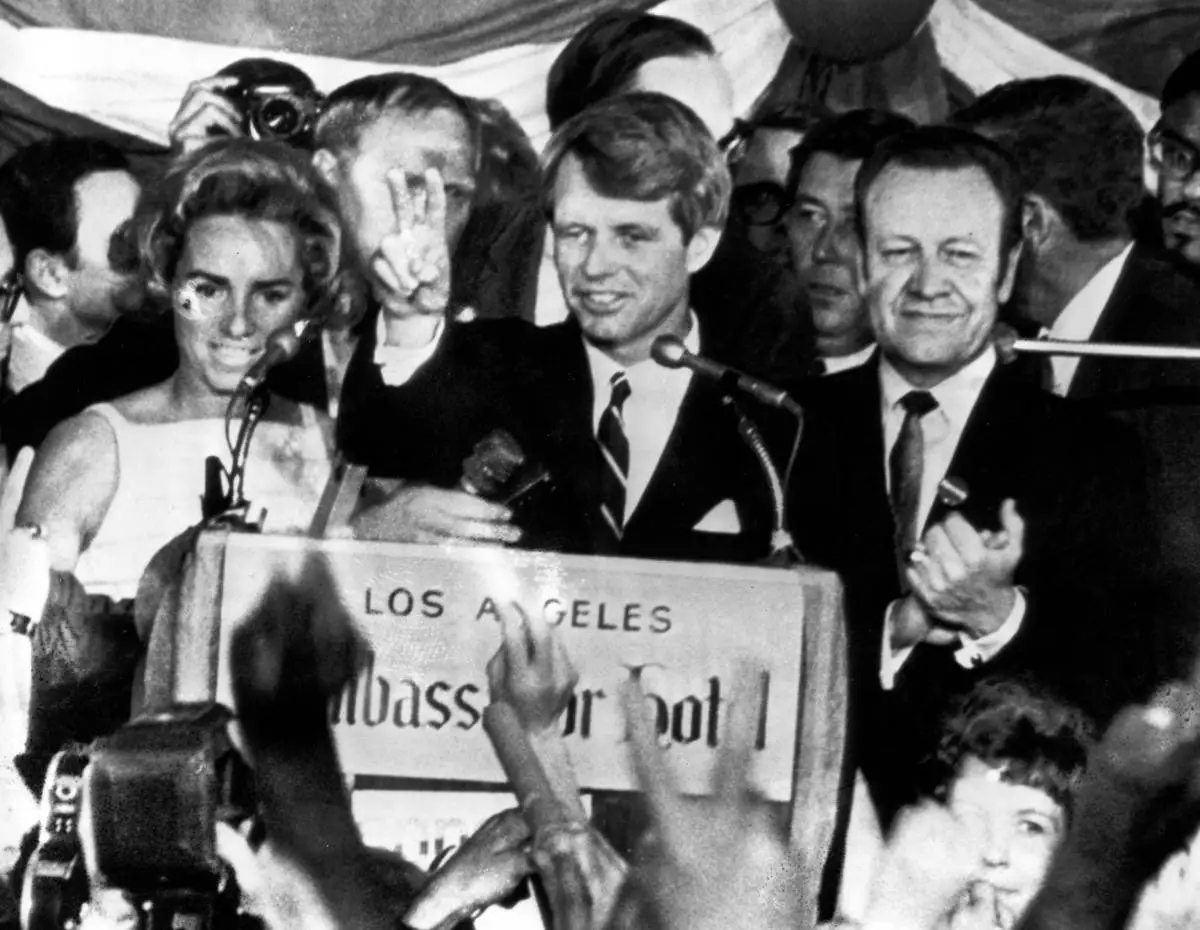
FILE - Sen. Robert F. Kennedy, D-N.Y., speaks to campaign workers, June 5, 1968, as his wife Ethel, left, and California campaign manager and speaker of the California Assembly, Jesse Unruh, look on, at the Ambassador Hotel in Los Angeles. (AP Photo)
MINNEAPOLIS (AP) — Right after Sunday worship at St. Paul’s-San Pablo Lutheran Church, Juan Carlos Toapanta lay in a lounge chair set up by the altar, needles sticking out of his forehead, wrist and foot for an hourlong acupuncture session.
“Just like the Lord’s light helps emotionally, the body’s pain is treated as well,” said the Ecuadorian construction worker, who suffers from sciatica and has worshipped at the Minneapolis church for about five months. “Everything feels freed, emotionally.”
Founded by Swedish immigrants in the late 19th century, the church is now a predominantly Latino congregation. Like most other churches in the U.S. that serve migrants, it has expanded its humanitarian, financial, legal and pastoral ministries during the Trump administration’s immigration crackdown.
It has also added monthly well-being sessions — at no charge — with acupuncture, Reiki and cupping therapy to ease the stress that uncertainty and fear have sown among the migrant community — including people in the U.S. illegally and U.S.-born citizens in mixed-status families.
“We have to feel well to respond well, not with panic and fear, which leads to nothing good,” said Lizete Vega, who has spearheaded the well-being efforts as the church’s Latino outreach coordinator. “People here feel that they’re protected and can be cared for spiritually, emotionally and physically.”
Faith leaders have increasingly found themselves called to help their congregations with mental health concerns, from chaplains in the U.S. Navy to pastors in the rural heartland.
Some see the need to provide reassurance and well-being as a growing part of their ministry to migrants, even as revised federal immigration guidelines now provide more leeway for enforcement in or near houses of worship.
“It was as if they were able to exhale a big breath,” the Rev. Hierald Osorto said of the 30 congregants who signed up for the first well-being session in March at St. Paul’s, where an outdoor mural features two traditional Swedish Dala horses between the Spanish words “sanación” (healing) and “resiliencia” (resilience).
After last Sunday’s worship, the altar table and Easter lilies were moved to make room for seven acupuncture chairs, arranged in a circle facing the central cross. Three massage tables were set up in front of the pews for the Reiki treatment, where practitioners hold their hands on or near the body’s energy centers.
“To see this space be quite literally a place of healing, in the place where we talk about it right at the altar, it moved me to tears,” Osorto said.
Wellness practitioners and mental health clinicians say anxiety and depression among those they serve in migrant communities have spread and intensified this year.
Already, migrants often arrive with severe trauma from violence they fled in their home countries as well as attacks along cartel-controlled routes to and through the U.S. border.
Women in particular often suffer sexual violence on the journey. For many, the fear that they or someone in their families might be deported is revictimizing. That makes it imperative that “safe places” exist where they can focus on wellness, said Noeline Maldonado, executive director of The Healing Center, which helps domestic and sexual violence victims in Brooklyn, New York.
Sessions that promote grounding and mindfulness are necessary to cope with the stress of both immediate crises as well as long-term unpredictability as immigration policies shift.
“Uncertainty is the biggest thing,” said Cheryl Aguilar, director of Hope Center for Wellness in the Washington, D.C., area, which has partnered with churches to provide mental health programs.
Being in community and cultivating hope is crucial because many people are responding to fear with rising anxiety, traumatic symptoms and isolation, all of which can have lasting consequences, Aguilar added.
“It’s nonstop work, nonstop fear,” said Sarah Howell, a clinical social worker in Houston with more than a decade of experience in migration-related trauma. “Every issue seems bigger.”
Howell said many of her clients in Texas are realizing they can’t live in a state of constant alarm, and the respite that wellness programs can bring becomes essential.
“People feel hopeless, but they have to keep fighting,” said Guadalupe Gonzalez, one of the bilingual Reiki practitioners whose organization, Odigo Wellness, partnered with St. Paul's in Minneapolis to offer the sessions.
She said she had some doubts about offering these healing practices inside a church — a large space with light flooding in and people moving through.
“But the sanctuary has a very nice, very positive energy,” Gonzalez said. “As practitioners we feel a lot of emotions.”
Several congregants who attended last Sunday’s two-hour wellness session said they felt both the energy and the connection between these healing practices and faith.
Martha Dominguez came bouncing down the altar steps after an acupuncture session. Grinning, she said she had never imagined a church would offer these kinds of “benefits.”
“Yes, it helps so much,” said the Mexican immigrant. “It takes the stress away from you.”
Limber Saliero, a roofer from Ecuador who has been worshipping at St. Paul’s for five years, said he had never heard of acupuncture but decided to try it.
“I felt like an energy that was flowing into me,” he said.
Vanessa Arcos tried acupuncture with her sister and her father, while her mother got a Reiki treatment. The family started attending the church the week they arrived in Minnesota from their home state of Guerrero, Mexico, almost a decade ago.
Lying in the lounge chair next to a statue of the Virgin of Guadalupe, Arcos said she overcame her fear of needles and found the treatment relaxing for both muscles and mind.
“It felt very peaceful, very safe,” Arcos said. “It’s important to do little things for yourself.”
Associated Press religion coverage receives support through the AP’s collaboration with The Conversation US, with funding from Lilly Endowment Inc. The AP is solely responsible for this content.
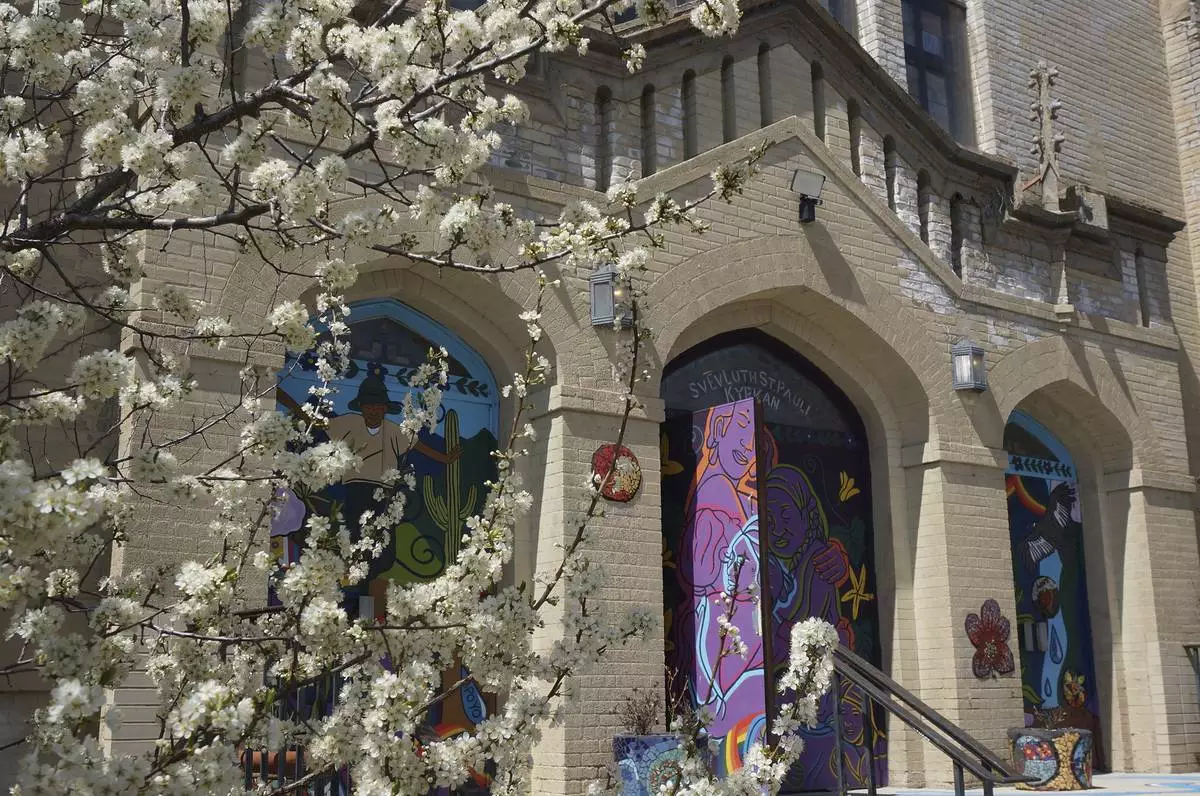
Spring blossoms bloom on a tree next to the entrance of St. Paul’s-San Pablo Lutheran Church, a congregation founded by Swedish immigrants in the late 19th century that has started offering wellness programs in its sanctuary as part of its migrant ministry, in Minneapolis, Sunday, April 27, 2025. (AP Photo/Giovanna Dell’Orto)
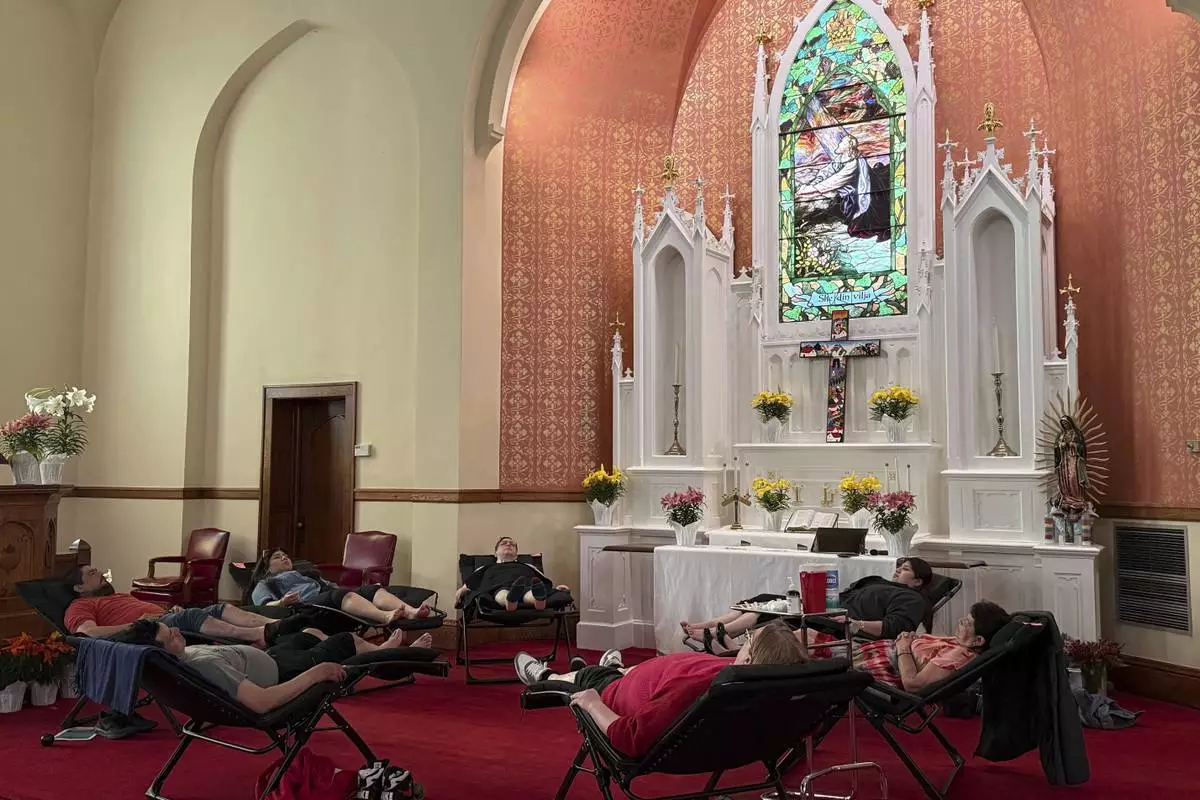
Congregants of St. Paul’s-San Pablo Lutheran Church receive acupuncture treatments in the sanctuary after worship during a wellness program the church started as part of its migrant ministry, in Minneapolis, Sunday, April 27, 2025. (AP Photo/Giovanna Dell’Orto)
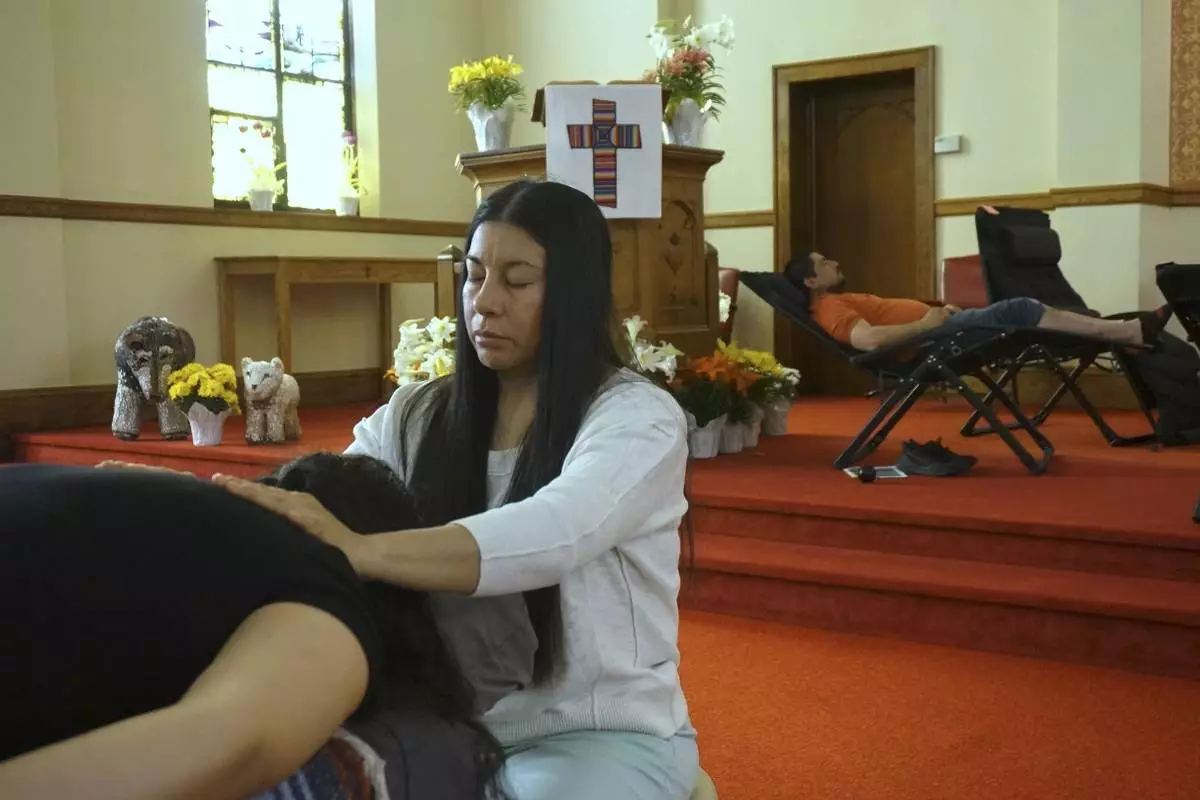
Guadalupe Gonzalez performs a Reiki treatment as Limber Saliero, background right, undergoes an acupuncture session in the sanctuary of St. Paul’s-San Pablo Lutheran Church, which recently added wellness programs as part of its migrant ministry, in Minneapolis, Sunday, April 27, 2025. (AP Photo/Giovanna Dell’Orto)
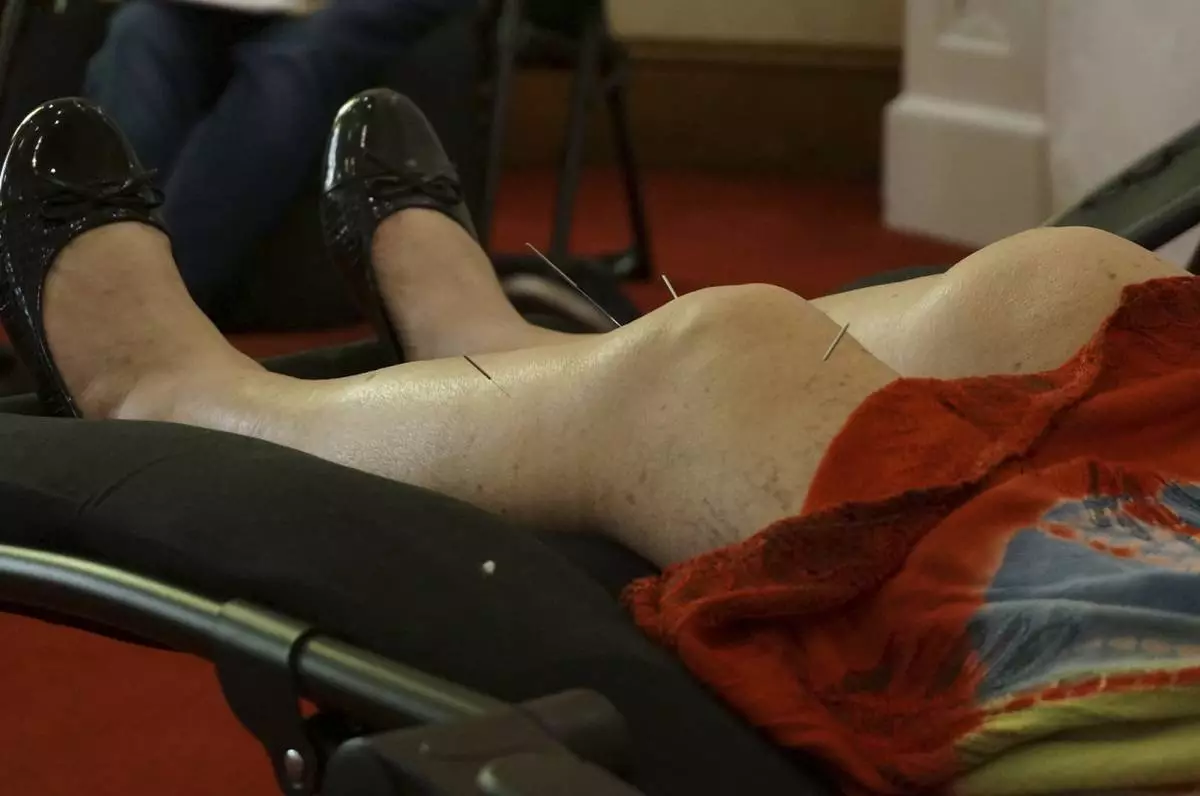
Martha Dominguez receives an acupuncture treatment in the sanctuary of St. Paul’s-San Pablo Lutheran Church, which recently added wellness sessions as part of its migrant ministry, in Minneapolis, Sunday, April 27, 2025. (AP Photo/Giovanna Dell’Orto)
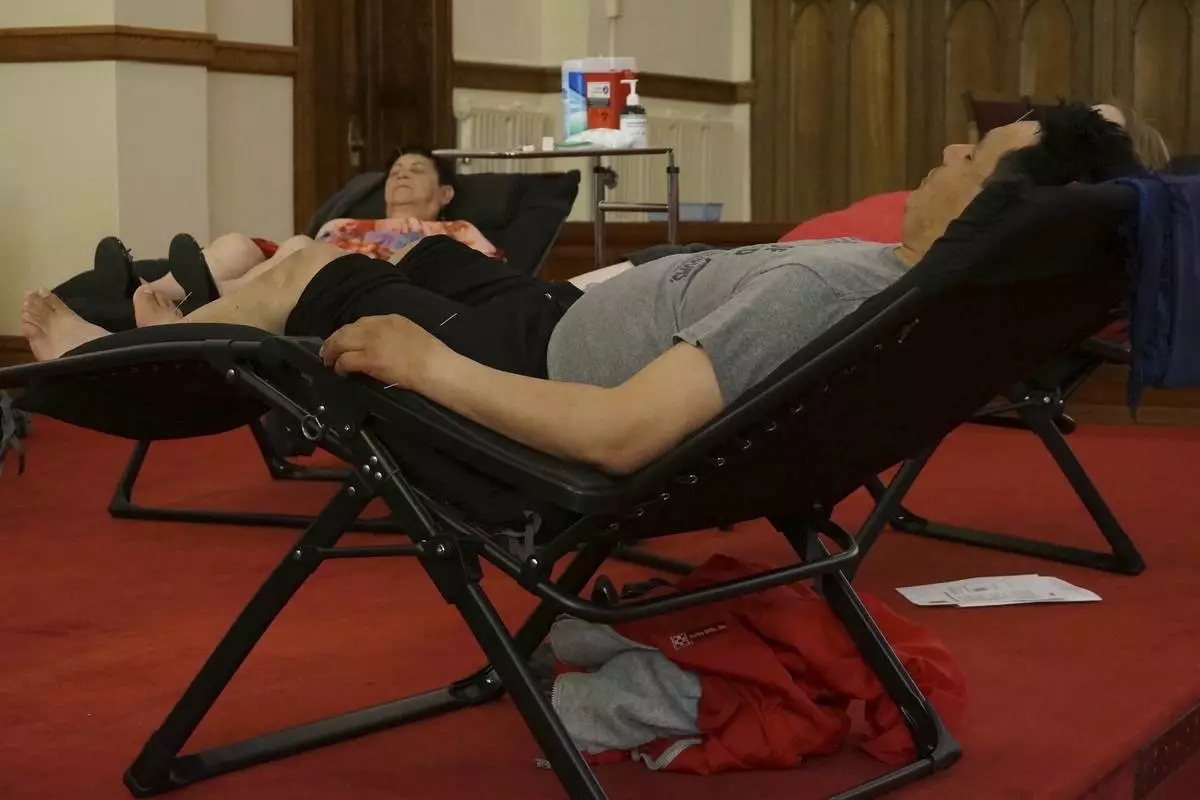
Juan Carlos Toapanta, foreground, and Martha Dominguez, background, receive acupuncture treatments in the sanctuary of St. Paul’s-San Pablo Lutheran Church, which recently added wellness sessions as part of its migrant ministry, in Minneapolis, Sunday, April 27, 2025. (AP Photo/Giovanna Dell’Orto)
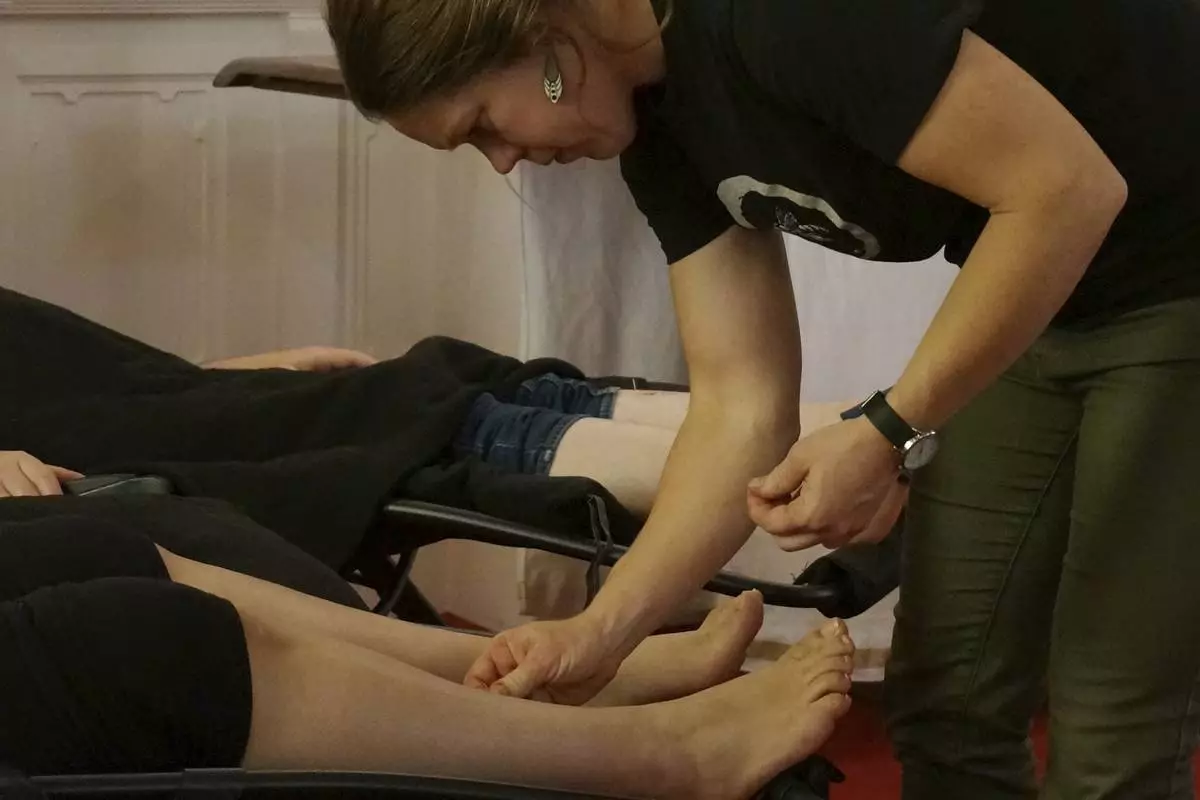
Acupuncturist Kahlyn Keilty-Lucas starts a treatment at St. Paul’s-San Pablo Lutheran Church, which holds wellness sessions after Sunday worship in the sanctuary as part of its migrant ministry, in Minneapolis, Sunday, April 27, 2025. (AP Photo/Giovanna Dell’Orto)
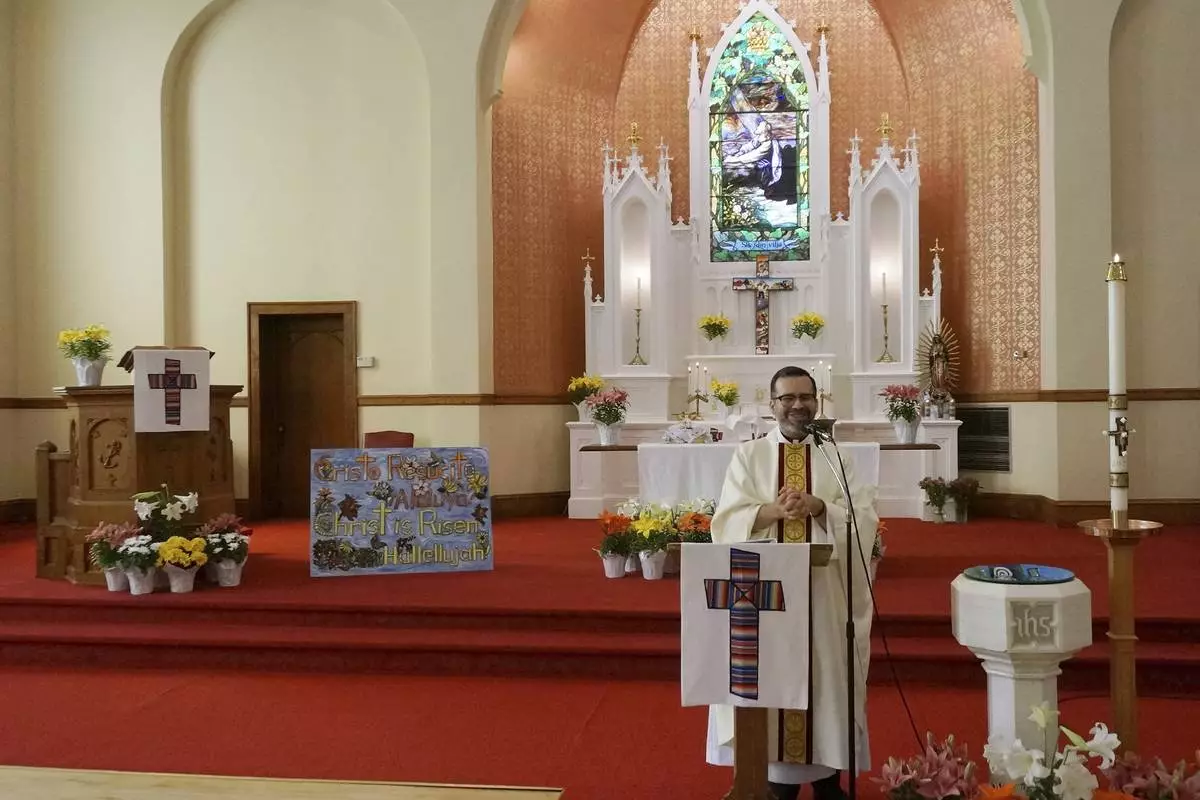
The Rev. Hierald Osorto speaks to the congregation of St. Paul’s-San Pablo Lutheran Church, which holds wellness sessions after Sunday worship in the sanctuary as part of its migrant ministry, in Minneapolis, Sunday, April 27, 2025. (AP Photo/Giovanna Dell’Orto)
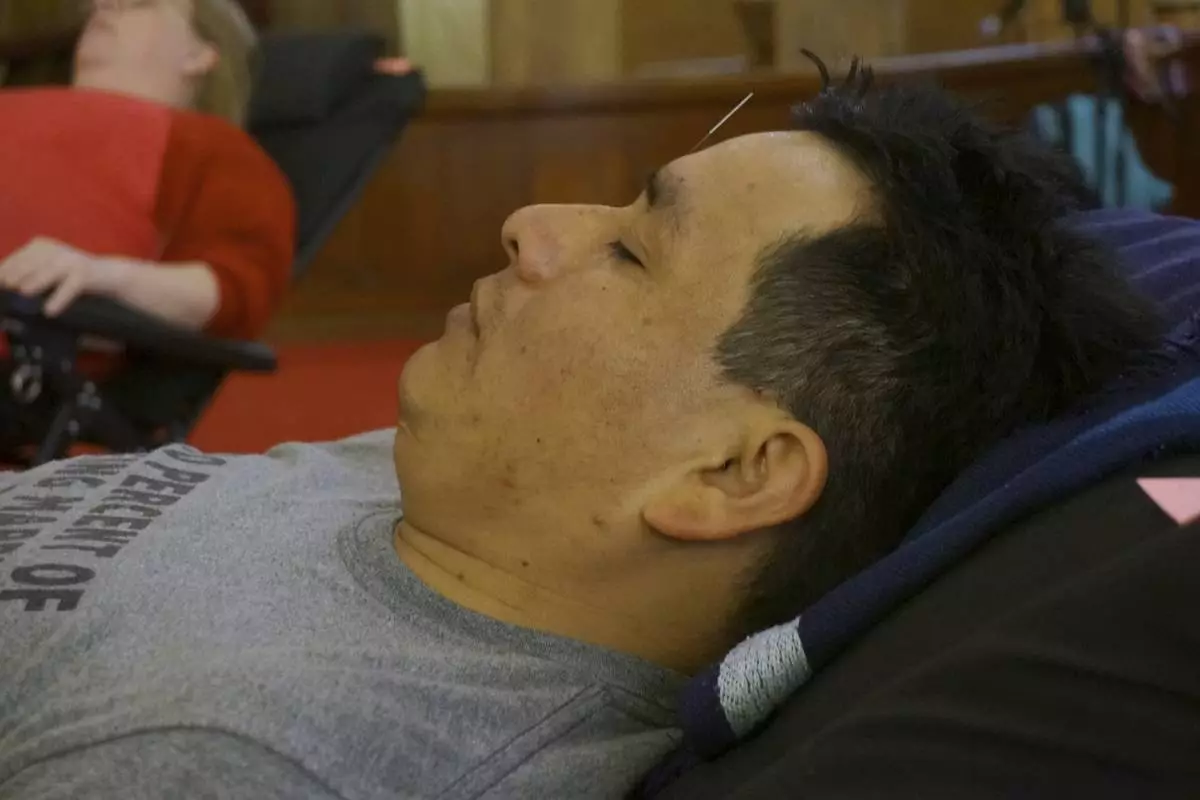
Juan Carlos Toapanta receives an acupuncture treatment in the sanctuary of St. Paul’s-San Pablo Lutheran Church, which recently added wellness sessions as part of its migrant ministry, in Minneapolis, Sunday, April 27, 2025. (AP Photo/Giovanna Dell’Orto)
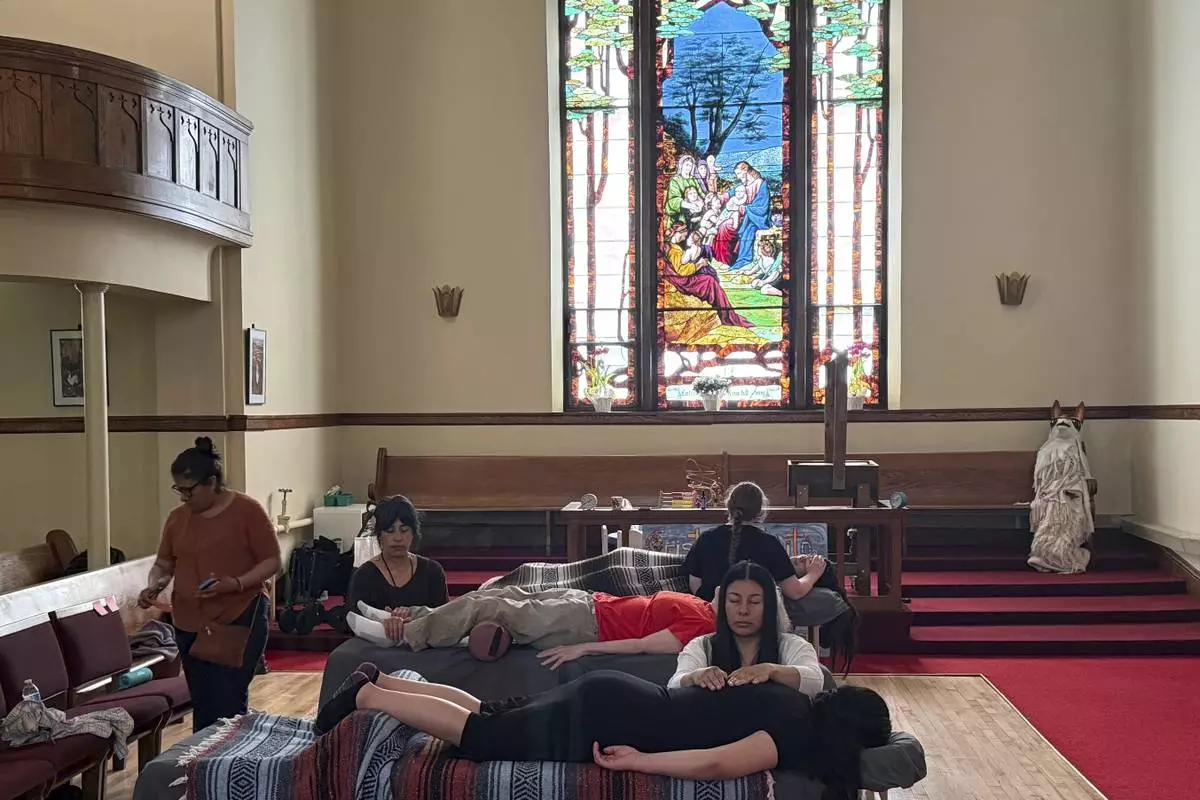
Guadalupe Gonzalez, foreground center, and two other practitioners perform Reiki treatments in the sanctuary of St. Paul’s-San Pablo Lutheran Church, where congregant Lizete Vega, left, helped organize wellness sessions as part of its migrant ministry, in Minneapolis, Sunday, April 27, 2025. (AP Photo/Giovanna Dell’Orto)
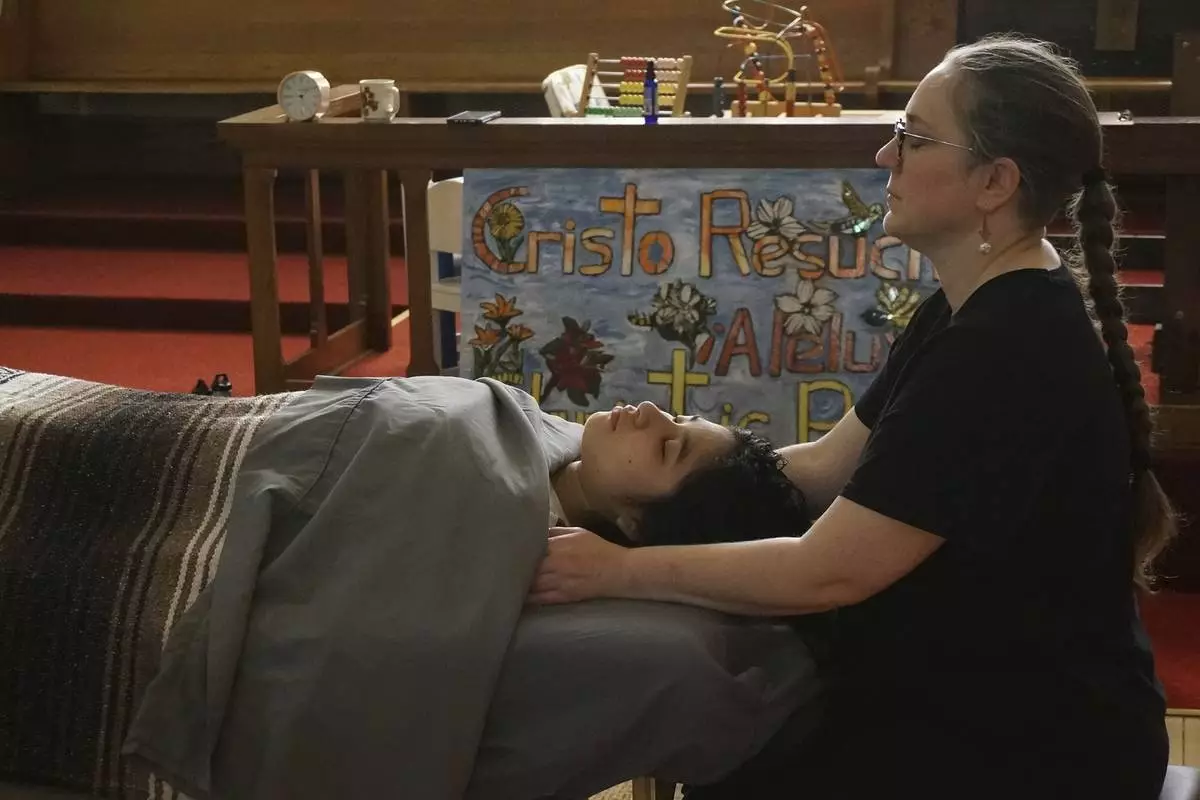
Marakah Mancini de León performs a Reiki treatment near a sign in Spanish reading, “Christ is risen,” in the sanctuary of St. Paul’s-San Pablo Lutheran Church, which recently added wellness sessions as part of its migrant ministry, in Minneapolis, Sunday, April 27, 2025. (AP Photo/Giovanna Dell’Orto)







